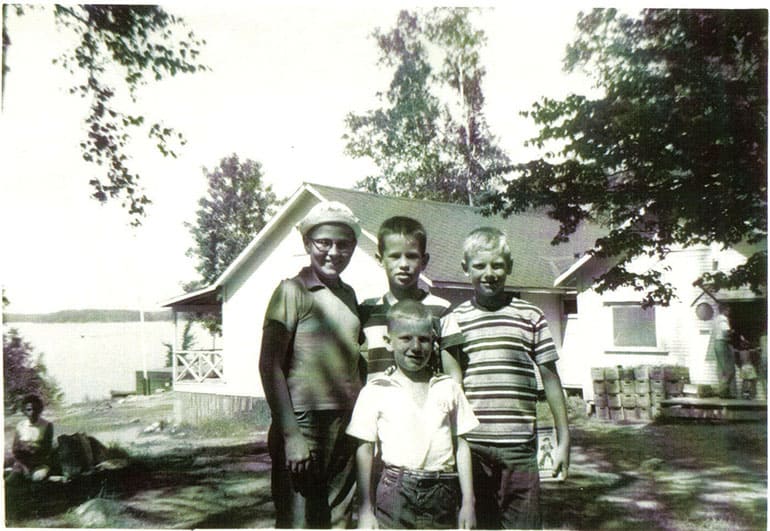History of Camp Kawartha
Providing outstanding outdoor recreation and education experiences since 1921
For over a century, Camp Kawartha has been providing outstanding outdoor recreation and education experiences to children, families, youth groups, and the wider community.
Pre-Establishment
Indigenous Presence
Camp Kawartha is located on the traditional territories of the Michi Zaagiik Anishinaabeg (Mississauga Ojibway), adjacent to the territory of the Haudenosaunee on the land recognized by the Williams Treaty. As a camp established by settlers in 1921, we acknowledge our own history as an institution on Indigenous land, as well as the role camps have played in appropriating Indigenous cultures.
We offer our gratitude to the original caretakers of this land and acknowledge our ongoing responsibility to foster kinship and honour Indigenous voices. We aim to be guided by humility and equity, and act in a manner that fosters the rejuvenation of the land for future generations.
Land Acknowledgements are only a starting place in decolonizing our practices. Camp Kawartha continues to take steps towards further learning and strives for true reconciliation. Camp Kawartha is continuing to learn about the history of the land Camp Kawartha is situated on through community connections, local historians, and land-based learning.
1920s
1921
The Rotary Boy’s Camp was the ‘brain child’ of Rotarian Claude Rogers. It was his inspiration that suggested it, and his initiative that brought it into realization.
In October 1921, the Rotary Club of Peterborough purchased several acres of land on Clear Lake from a local farmer, Mr. Samuel Bryson for $250.00. The Club intended to develop a boy’s camp “free from the artificial life of cities” … “where boys learn to rely on their own resources and experience the joys of achievement in their work and play” (from a brochure published in 1922).
1922
By July 1922, the “Kawartha Boy’s Camp” was in operation, serving its first forty boys. The Camp operated under the direction of the Rotary Club until the early 1950’s.
- Reminiscents of the “Y” camp in the 20’s, by Doug Cruthers
- Camp Brochure (c. 1929)
- Rotary Club Kawartha Boys’ Camp -a wonderful and detailed 1949 personal recollection of the heritage of Camp Kawartha by Claude H. Rogers


1950s
1954
The camp was purchased by the Peterborough and District YMCA in 1954. The Camp developed into both a boy’s and girl’s facility and was renamed “Camp Kawartha.” After many successful years of operation, the YMCA closed the Camp in 1982 when it encountered financial challenges.


1960s

1980s
1985
1990s
2000s
2004
2005
2006
2007
2009
2010s
2012
Cabin Upgrades, various facility upgrades
2013
2014
2020s
2020
Due to the COVID-19 Pandemic, Camp Kawartha did not run a Summer Camp program for the first summer in many years. Camp was moved to an ‘online’ model to bring a camp experience home for our campers.
2022
Over the Victoria Day weekend of 2022, the Kawartha area was hit by a Derecho (a major straight line windstorm), and Camp Kawartha had over 600 trees down on the property – with only 3 weeks to open for summer camp! Thanks to the help of the community, we were able to get up and running in time for summer camp!
Future
Site and Facilities Master Plan
The objective of the Master Plan is to establish a cohesive vision and long term planning strategy to guide the environmentally sustainable development of the Camp site and its facilities. The plan includes options for upgrading, expanding and/or replacing existing facilities, as well as recommendations for the development of new facilities as required.
